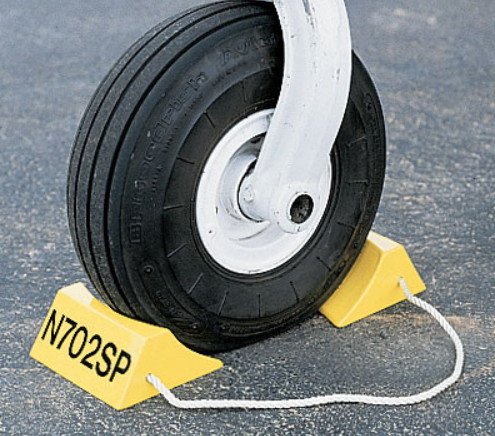Hangar Safety » Wheel chocking procedure
Procedure to Use Aircraft Wheel Chocks
- Selection of standard wheel chocks: An assigned Aircraft Engineer will select proper wheel chocks by checking the dimensions and condition of the chock material, which can be used on aircraft.
- Handover of specific wheel chocks: In response to the demand by the Aircraft Engineer, Line Maintenance person who is in-charge for the tool store will handover the specific chocks after registering the delivery details.
- Provision of separation between tires and chocks: To prevent pinching, approximately 3-6 inch separation must be provided between tires and chocks. Immediately, the following loading chocks should be moved back to the 3-6 inch separation position against the tires, in order to allow airplanes to roll over the chocks.
- Inspection of brakes and main gears: The parking brakes must be set and all main gears be chocked front and aft in all aircraft. During ground run-up in Boeing Airliner, the chocks should be placed 6”/1’ ahead of wheels to evaluate the possibility of tires jumping the chocks.
- Alternative method of placement of chocks: To prevent pinching the chocks during loading, alternative method is followed by placing the chocks tightly fore and aft of the nose landing gear and aft of the main landing gear and by providing 2-3 inch separation between tires and chock forward of the main landing gear.
- Use of tow tractor: If the rear main landing gear chocks get trapped by the tires, the tow tractor is used to move the aircraft slightly forward to release the chocks.
- Parking brakes to be set: Before engine start, parking brakes should be set while removing the chocks. The flight crew and passengers aboard the aircraft must fasten their seat belts.
- Removal of chocks: After proper signal has been given, the chocks must be removed with utmost caution. It must be done from the safest direction with regard to the location of jet intake and exhausts.
- Proper securing of chocks: After removal of chocks, they should be properly secured to prevent movements by winds or engine blasts. The chocks must not be left on ramps or taxiways where they can pose hazards.
- Return of wheel chocks: After use, the Aircraft Engineer will return back the wheel chocks to the Line Maintenance person, who will store it in a specific safe location.

